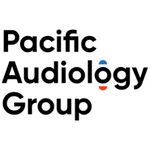History of Cerumen Management
The hearing care professional’s (HCP) journey with cerumen management is still in its infancy. In 1992, the American Speech-Language-Hearing Association (ASHA) officially included cerumen management into the scope of practice of audiologists and it still feels like it is in its teenage years. As a profession, we are still adjusting to performing cerumen management. It still feels awkward to many of us, even though many professionals were trained and have practiced cerumen management for many years before it fell within our scope of practice.
Since this time, it has become apparent that this procedure does in fact belong in the scope of practice for the HCP. Many professional organizations and regulatory bodies followed ASHA’s lead, including the American Academy of Audiology (AAA), the Academy of Doctors of Audiology (ADA), and the Canadian Academy of Audiology (CAA). In fact, many CAA provincial regulatory bodies allow for advanced training and licensing in this area, for both audiologists and hearing instrument practitioners.
Understanding that cerumen was not always in our scope can help us understand why, although the percentage of HCPs performing cerumen management is growing, it is far from 100%.
Rapid Development of Hearing Healthcare
Around the same time that cerumen management entered our scope, the field of hearing healthcare was booming, developing at a pace that other areas of healthcare had not seen in many years. New techniques were being standardized, such as: impedance measures, real-ear measurement (REM) verification, otoacoustic emissions (OAE), and even the foam tip for routine audiometry. All these new procedures had something in common; to be reliable, they required CLEAN EARS!
With cerumen impaction rates nearing 60% in some populations, and not being able to manage the cerumen problem ourselves, we had a problem. As a simple solution, we began referring out to other professionals, including general practitioners and ENTs. The alternative to sending our clients away and delaying service provision was to perform them with cerumen in their ears, affecting the quality of the measure.
The Problem of Education
When cerumen management broadly entered the scope of the HCP in the 1990s, most practice standards or regulations that were published around the subject required adequate education and training, while some also required mentorships. This became problematic for the HCP to take on this new practice since the education piece had not been fully developed. Even today it is still lacking.
The U.S. has the most comprehensive audiological education globally, the Au.D., and as of 2012 over 50% of Au.D. program graduates reported that they received inadequate training and education in cerumen management. This created a dilemma for HCPs as they now had cerumen management within their scope, but were only able to perform it after acquiring advanced training, which they often struggled to find.
Best Audiology Practice
Best practice standards are critical to our profession. Ear canals that are not fully occluded, but that have cerumen present, can lead to compromised audiometric data, specifically for hearing assessments and for real-ear measures. These measurements are too often performed with significant levels of cerumen present, which can adversely affect results.
This is alarming for the HCP’s best practice standards. The fit of earmolds is dependent on a clean, cerumen-free ear canal during the impression-taking process. Failure to follow these standards will lead to decreased user satisfaction and a disservice to the client and the profession. Not to mention the havoc that cerumen can wreak on hearing aids!
Increased Revenue
In a profession that has bundled the cost of our care into hearing aid sales, cerumen management offers the opportunity for fee-for-service work, with common rates of care being $35 to $75 per ear. Even without a fee-for-service model, you will still likely enjoy a revenue boost as active cerumen management decreases appointment postponements due to cerumen impaction. Your hearing aid supplier will also thank you as repair rates diminish!
Professionalism
Our clients come to us for their hearing care, and for many of the procedures we perform, we do require a clean ear for accuracy and safety. We believe it is unprofessional for HCPs not to provide a basic level of cerumen management. Telling your client that you don’t know how to or are unable to do something that is clearly within your scope of practice can be embarrassing.
For the private hearing care practice to be viewed as a one stop shop that goes beyond hearing aid sales, it is essential we perform all skills within our scope of practice. Imagine a family physician being told by a doctor of audiology that they could fit hearing aids, but not remove ear wax, even though it was within their scope of practice. They might be suspicious of the entire profession!
Conclusion
The cerumen management situation is improving where continuing education allows. Cerumen management practice in the US has increased, specifically in private practice, however they are still far from 100% provision. Cerumen management training and education seem to be one of the key limiting factors to us taking ownership of it as a profession.




